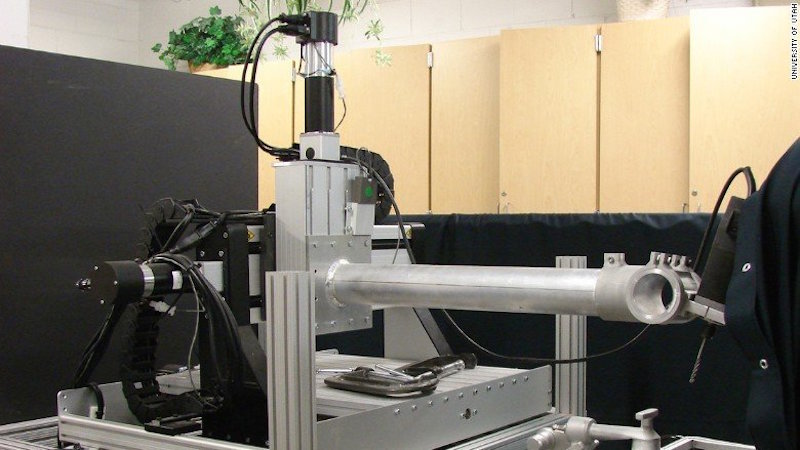Medical device and MedTech insights, news, tips and more
Robotic Drill Could Perform Surgery 50x Faster
May 3, 2017

NEW YORK (CNNMoney) — A robotic drill could perform your future surgery — way, way faster than usual.
Researchers from the University of Utah have created an automated machine that can do a complicated cranial surgery 50 times faster than standard procedures. The team’s approach reduces the surgery time from two hours with a hand drill to two-and-a-half minutes.
This specific surgery detailed in the paper — which was published Monday in the journal “Neurosurgical Focus” — is typically used to remove noncancerous tumors in patients with significant hearing loss. But the researchers say it’s a “proof of principle” to show the robot could perform complex procedures that require experience and skill.
The drill produces fast, clean and safe cuts, reducing the time the wound is open and the patient is under anesthesia. This decreases infection, surgical costs and human error, according to the researchers, led by neurosurgeon William Couldwell.
“It’s a time-saving device, more than anything,” Couldwell told CNNTech.
While the use of automation and robotics in surgery has been growing for the past decade — for example, medical robots already can help put screws in the spine or assist in hip replacement surgeries — Couldwell said this type of technology hasn’t been applied in skull-based surgery.
Here’s how it works: First, a CT scan collects a patient’s bone data and identifies the precise location of sensitive structures like nerves and major veins. Surgeons use the information from the CT scan to program the cutting path of the drill using special software developed by engineers on Couldwell’s team.
“We can program [it] to drill the bone out safely just by using the patient’s CT criteria,” Couldwell said. “It basically machines out the bone.”
The cutting path must avoid a number of sensitive features, such as the venous sinus, which drains blood from the brain. With the team’s approach, the surgeon can program safety barriers along the cutting path within one to two millimeters of these sensitive areas.
Read More at the Source: New robotic drill performs skull surgery 50 times faster – East Idaho News

